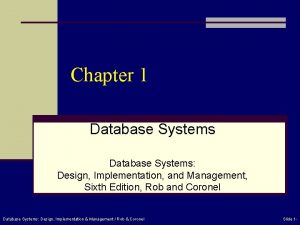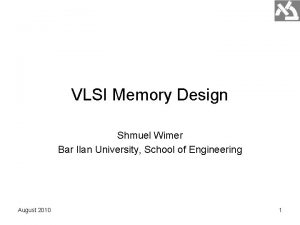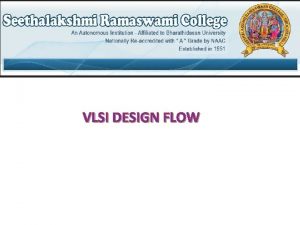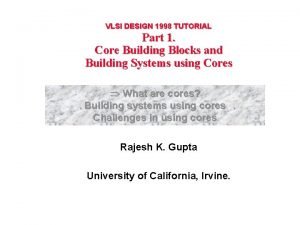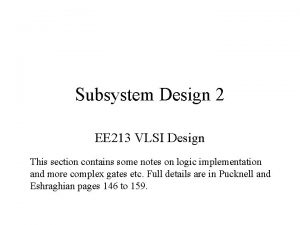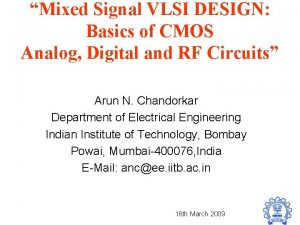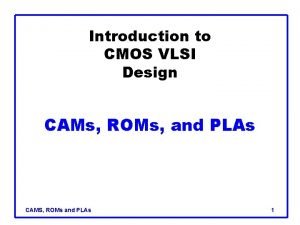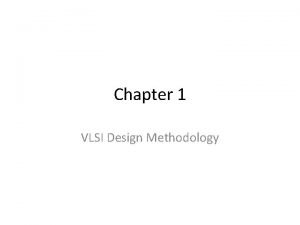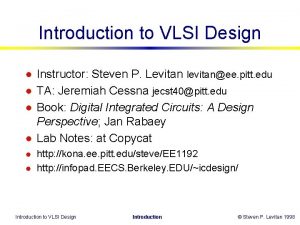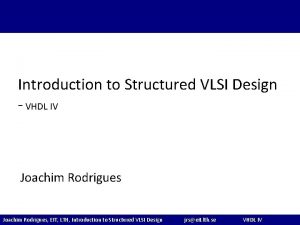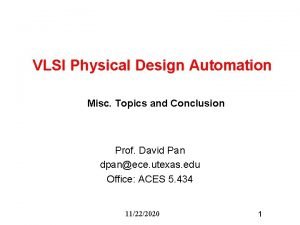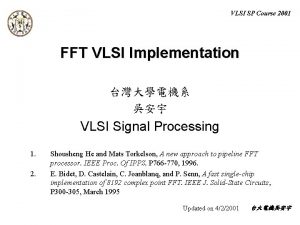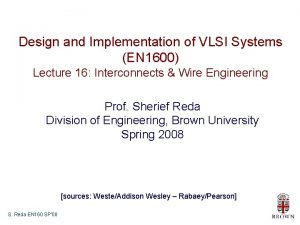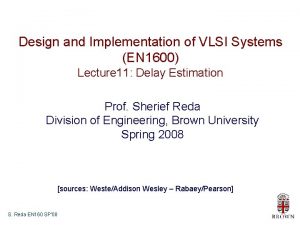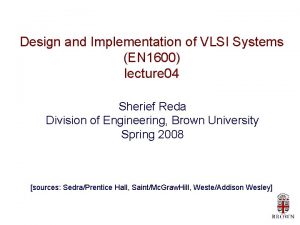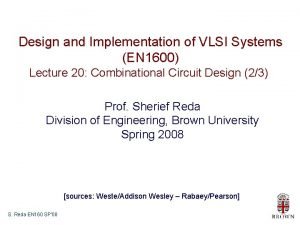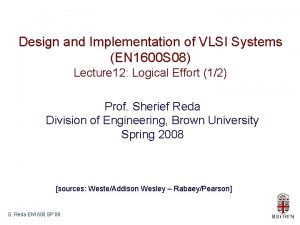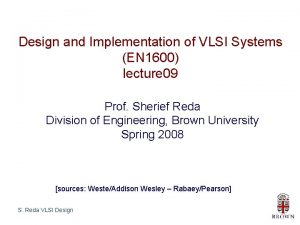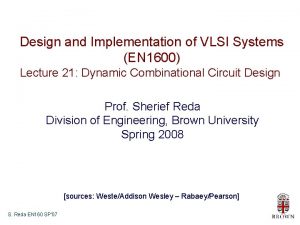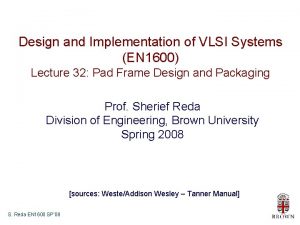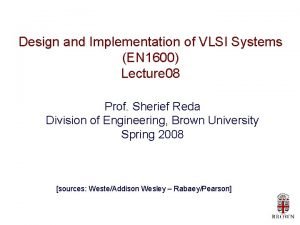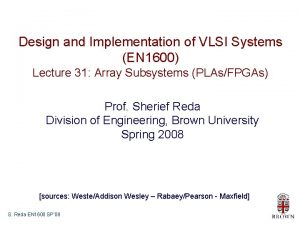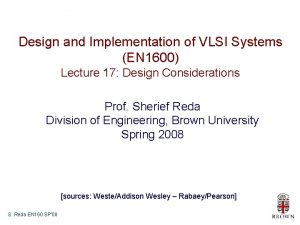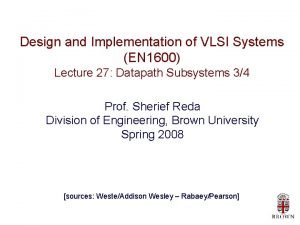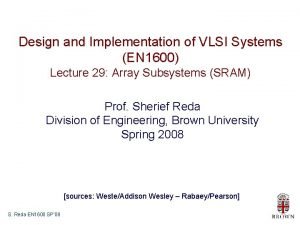Design and Implementation of VLSI Systems EN 1600
















- Slides: 16

Design and Implementation of VLSI Systems (EN 1600) lecture 02 Sherief Reda Division of Engineering, Brown University Spring 2008 [sources: Weste/Addison Wesley – Rabaey Pearson]

Impact of doping on silicon resistivity silicon 4. 995 1022 atoms in cm 3 Resistivity 3. 2 105 Ωcm dope with phosphorous or arsenic n-type 1 atom in billion 88. 6 Ωcm 1 atom in million 0. 114 Ωcm 1 atom in thousand 0. 00174 Ωcm dope with boron p-type 1 atom in billion 266. 14 Ωcm 1 atom in million 0. 344 Ωcm 1 atom in thousand 0. 00233 Ωcm Electrons are mobile/faster than holes

What happens if we sandwich p & n types? A Al p n B One-dimensional representation Ø In equilibrium, the drift and diffusion components of current are balanced; therefore the net current flowing across the junction is zero.

PN-junction regions of operation In reverse bias, the width of the depletion region increases. The diode acts as voltage-controlled capacitor. A forward bias decreases the potential drop across the junction. As a result, the magnitude of the electric field decreases and the width of the depletion region narrows.

n. MOS and p. MOS transistors Each transistor consists of a stack of a conducting gate, an insulating layer of silicon dioxide and a semiconductor substrate (body or bulk) n. MOS transistor Body is typically grounded p. MOS transistor Body is typically at supply voltage

n. MOS transistor g=0: When the gate is at a low voltage (VGS < VTN): Ø p-type body is at low voltage Ø source and drain-junctions diodes are OFF Ø transistor is OFF, no current flows g=1: When the gate is at a high voltage (VGS ≥ VTN): Ø negative charge attracted to body Ø inverts a channel under gate to n-type Ø transistor ON, current flows, transistor can be viewed as a resistor

n. MOS pass ‘ 0’ more strongly than ‘ 1’ • Why does ‘ 1’ pass degraded?

p. MOS transistor g=0: When the gate is at a low voltage (VGS < VTP): Ø positive charge attracted to body Ø inverts a channel under gate to p-type Ø transistor ON, current flows g=1: When the gate is at a high voltage (VGS ≥ VTP): Ø negative charge attracted to body Ø source and drain junctions are OFF Ø transistor OFF, no current flows

p. MOS pass ‘ 1’ more strongly than ‘ 0’ • Why does ‘ 0’ pass degraded?

An n. MOS and p. MOS make up an inverter p. MOS + n. MOS = CMOS

More CMOS gates What is this gate function? What’s wrong about this design?

3 -input NANDs What are the advantages of CMOS circuit style?

Series-Parallel Combinations

What are the transistor schematics of the NOR gate?

AOI

Transmission gate
 Database systems: design, implementation, and management
Database systems: design, implementation, and management Database systems design implementation
Database systems design implementation Memory design in vlsi
Memory design in vlsi Vlsi flow design
Vlsi flow design Biucache
Biucache Subsystem design in vlsi
Subsystem design in vlsi Mixed signal vlsi design
Mixed signal vlsi design Rom design in vlsi
Rom design in vlsi Vlsi design tutorial
Vlsi design tutorial Y chart vlsi
Y chart vlsi Layout design rules in cmos vlsi
Layout design rules in cmos vlsi Cpld in vlsi
Cpld in vlsi Ad hoc testable design techniques
Ad hoc testable design techniques Vlsi roadmap
Vlsi roadmap Structured vlsi design
Structured vlsi design Physical design
Physical design Vlsi design styles
Vlsi design styles
